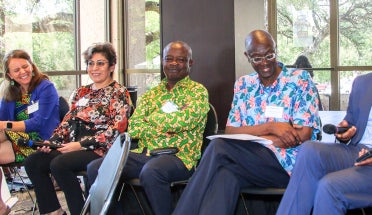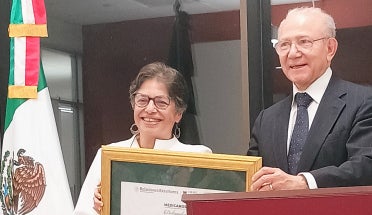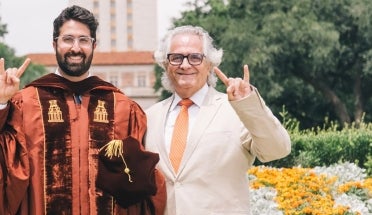
Iñapari Unveiled: Documenting an Endangered Language
- Dec 19, 2023
- by Bianca Guevara Magallanez
Fourth-year Ph.D. student Barrett Hamp has a history of traveling to the heart of the Peruvian jungle. Hamp, who recently returned from his latest fieldwork trip there, has visited the current site on two previous occasions, first in 2018 and again in 2022.
Located on a tiny settlement, the village of Sabaluyoc sits on a bend in the Las Piedras River in the Madre de Dios district of Peru. This remote location is where Hamp has conducted his fieldwork since 2018. During his most recent journey, which spanned four weeks in summer 2023, he worked to document and describe the endangered language of Iñapari.
Uncovering a Language Nearly Lost
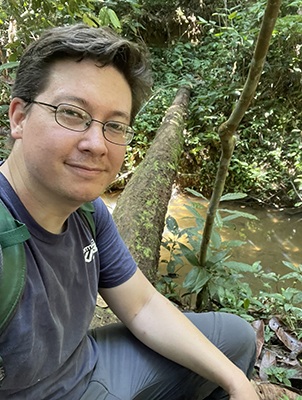
With proficiency in Spanish and local languages — plus a decade of experience working in South America to cover regions in Peru, Ecuador, Colombia and Bolivia — Hamp has set out on a unique adventure supported by the Linguistics Department in the College of Liberal Arts at The University of Texas at Austin.
Hamp is determined to preserve Iñapari, a language spoken by only four individuals in the entire world — all siblings, and all over the age of 60 years old. His research works to unravel the linguistic nuances and cultural tapestry of this unique Arawakan language, which is closely related to the Yine and Apurina languages.
“The goal is to describe the language and document it, which is vitally important since so little is currently known about it and there are so few speakers,” said Hamp. “Current attempts at reconstruction of the subgroup are hindered by the lack of data on Iñapari. The ultimate outcome of this and future field trips will be a descriptive grammar and dictionary of this language.”
Last of the Iñapari Speakers
For more than four years, Barret has worked with two siblings, Jorge and Maria, who share a compelling family history: Their father was one of two speakers of the language who eventually escaped the forced relocation of the Iñapari people in the 1940s, when many Indigenous groups in this region were forced into slavery to harvest rubber.
Escaping from captivity after five years left the man free to speak his own language, despite having few fellow speakers to share it. He then passed his knowledge on to his four children living in the settlement of Sabaluyoc, who now represent the last remnants of Iñapari speakers on the planet.
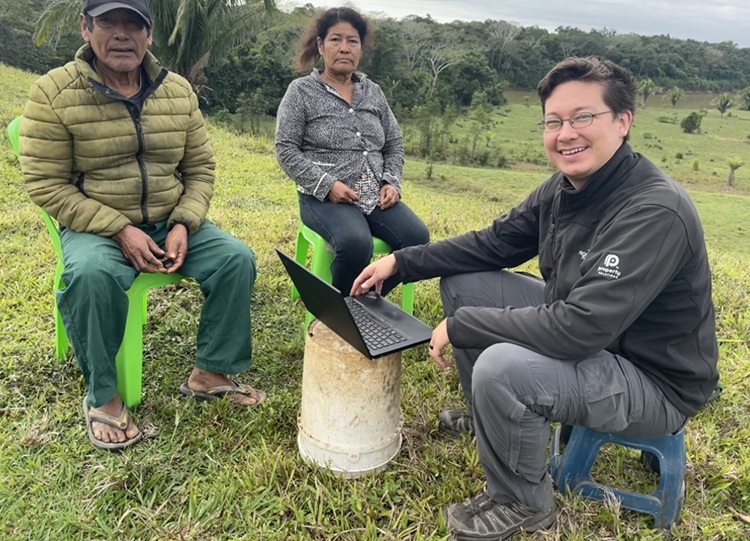
The siblings have not passed their language to the next generation; likewise, few academic efforts have addressed the area and its people. In all likelihood, Hamp’s current research may represent the last chance to document this language and culture.
"Before I began working with the Iñapari speakers, there were only two academic papers, published in the ’90s, describing pretty preliminary observations about the language,” said Hamp. "So every time I work with them, I am recording and documenting phenomena that have never been written down before.”
Supporting Recognition of a Distinct Culture
Hamp's journey is not confined to linguistic documentation. He also delves into the history, culture and traditions of the Iñapari people, adding layers to his academic findings. The language presents a challenge and an opportunity to contribute to the preservation of cultural heritage in Peru.
The field site in Sabaluyoc is also much more than a research location. It's a temporary home, where Hamp sleeps on the floor of a storage room behind a small schoolhouse. He wakes to the distant calls of howler monkeys and the sounds of people drawing water from a nearby natural spring. Sabaluyoc’s vibrant wildlife includes monkeys, tapirs, caimans and agoutis.
"There is no other place on Earth that this fieldwork could be done without accruing a great deal of discomfort and inconvenience for the speakers of the language," Hamp said.
The outcome of this work will serve the dual purposes of advancing linguistic knowledge and supporting the speakers in their pursuit of recognition as a distinctive Indigenous entity by the Peruvian government. The resulting Iñapari grammar and dictionary will stand as tangible proof of their linguistic and cultural distinctiveness when compared to other local language variations.
As Hamp continues his research, his goals extend beyond recording words and phrases. It's about preserving an entire cultural legacy and ensuring that the Iñapari language reaches far beyond the pages of academic documentation.

